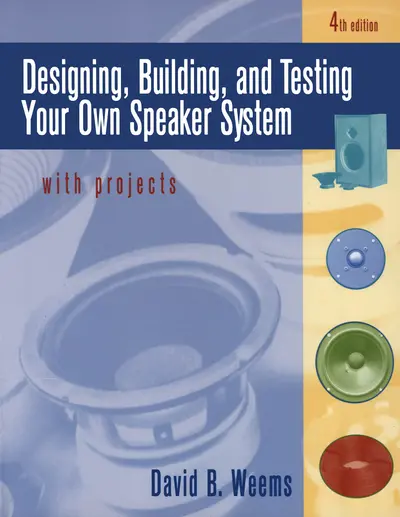My Account Details

ISBN10: 007069429X | ISBN13: 9780070694293

Step 1 . Download Adobe Digital Editions to your PC or Mac desktop/laptop.
Step 2. Register and authorize your Adobe ID (optional). To access your eBook on multiple devices, first create an Adobe ID at account.adobe.com. Then, open Adobe Digital Editions, go to the Help menu, and select "Authorize Computer" to link your Adobe ID.
Step 3. Open Your eBook. Use Adobe Digital Editions to open the file. If the eBook doesn’t open, contact customer service for assistance.
Publisher's Note: Products purchased from Third Party sellers are not guaranteed by the publisher for quality, authenticity, or access to any online entitlements included with the product.
1 How a Speaker Works
Parts of a Speaker
Frequency Response
Transient Response
Dispersion
Cone Resonance
Compliance
Damping
Impedance
Efficiency
Power Rating
Speaker Polarity
Kinds of Drivers
2 Kinds of Speaker Enclosures
Functions of Enclosures
Types of Enclosures
Which Enclosure is Best?
3 Speaker-Box Construction
Desirable Enclosure Characteristics
Enclosure Shape
Speaker Placement
Some Recent Trends in Enclosure Design
Materials
Extra Wall Treatment
Construction Rules
Finishing Your Speakers
More Box-Construction Hints
4 Closed-Box Speaker Systems
Closed-Box Basics
How to Fit Box Volume to Speaker
Closed-Box Summary
5 Ported-Box Speaker Systems
Kinds of Ported Enclosures
How Tuning Affects Response
How Box Volume Affects Response
Thiele Ported-Box Design
Obtaining the Box and Port Dimensions
Fine Tuning by Ear
The Boom-Box Alignment
The Double-Chamber Reflex
How to Design a Double-Chamber Reflex
Band-Pass Systems
6 Crossover Networks
Kinds of Crossover Networks
How to Choose Crossover Frequencies to Match Drivers
How to Make a Choke Coil
L-Pads
Real World Crossovers
Where to Put a Crossover
Impedance Equalizers
Contour Networks and Notch Filters
Resonant-Peak Filters
Crossover Networks and Piezoelectric Tweeters
7 Fun with a Computer Program
Short Computer Programs
LDP
Programs for Driver Tests
Programs for Box Design
Programs for Box Tests
Programs for Network Design
Programs for Speaker Directivity
8 How to Choose and Use Your Speakers
Choosing a Speaker
Using Your Speakers
Kind of Wire
Terminals
How to Solder
Your Listening Room
Ideal Speaker Placement
Balancing Your Speakers
Protecting Your Speakers
Extension Speakers
9 Testing Your Speakers
Listening Tests
Critical Listening
Tests with a Sound-Level Meter
Frequency Correction with an Equalizer
Polarity Tests
Damping Test
Using Test Equipment
Impedance
Free–Air Resonance
Driver Q
Tests for Vvs
Box Tests
Notch Filter Test
10 Projects
Project 1: A simple mini-speaker
Project 2: A low-cost closed-box speaker system
Project 3: A ported-box mini-speaker
Project 4: A ported-box compact speaker
Appendices
A Useful Formulas
Electrical Units Used in Speaker Circuits
Ohm’s Law for Speakers
Reactance and Resonance
Conversion Factors for Speaker Compliance
Speaker Formulas for Constant-Voltage Sound-Distribution Systems
Choosing Impedance-Matching Transformers
Useful Speaker-Design Formulas and Procedures
B Wire Data for Homemade Coils
C Computer Programs
D Mail-Order Houses
Glossary
Index
About the Author
Need support? We're here to help - Get real-world support and resources every step of the way.